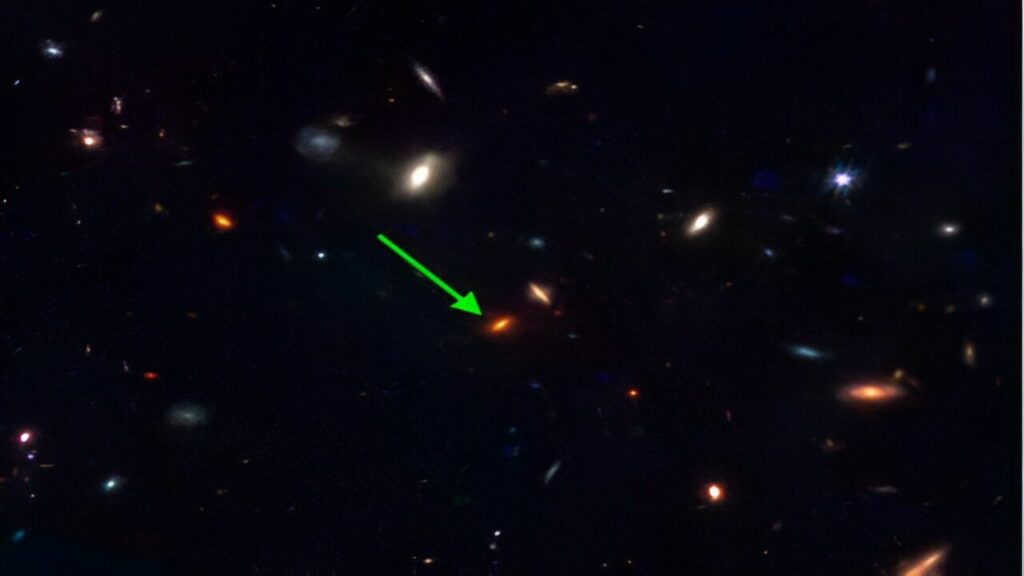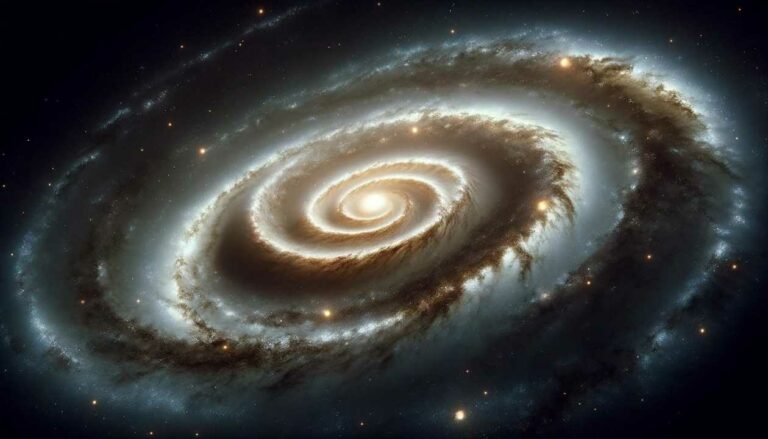JWST Discovers Enigmatic Ancient Galaxy That Challenges Current Theories
Featured in a recent issue of the journal Nature are articles containing discoveries that could dramatically alter the way astronomers explain the formation of galaxies and the mysterious fabric of the universe called dark matter. The empirical data was collected with the JWST for viewing the population of stars existing before the Milky Way and 11 billion years ago. Remarkably, this galaxy should not exist by virtue of existing theories and conceptualizations.
The team of researchers that comprised University of California, Schenectady, Swinburne University of Technology with Dr. Karl Glazebrook as the lead researcher, utilized JWST to get spectroscopic observation of this gargantuan quiescent galaxy in the early universe. Thus, the number of stars that were present in this part of the spiral galaxy when it was only 800 million years old was mind-boggling, 1. It has been detected that yet galaxies formed 5 billion years earlier than what was previously suspected which poses problems for current theories of galaxy formation and evolution.
I will now turn to the matters of presentation where Professor Glazebrook spoke about the team’s commitment to solving the unknown issues related to this specific galaxy and pointed out that the team has been working on finding the answers to these questions for as long as seven years. Because the M92 is somewhat red and quite faint, the team faced some challenges which they overcame by observing it with the two biggest telescopes on planet Earth. In the end, it was imperative to call upon the JWST, which is situated outside our planet, to determine the actual authenticity of this unprecedented cosmic object.

The structure of galaxies is a key concept that forms the basis of contemporary astrophysics and hypothesizes a sharp cut in the number of immense galaxies in the early universe.
It was previously believed that it was not possible to observe extremely massive quiescent galaxies as early as one to two billion years after the Big Bang; this finding highlights a major issue with current theoretical paradigms.
Distinguished Professor Glazebrook collaborated with leading researchers from across the international plane including Dr. Themiya Nanayakkara Dr. Lalitwadee Kawinwanichakij Dr. Colin Jacobs, Dr. Harry Chittenden Glenn G Kacprzak with Swinburne’s Centre for Astrophysics and Supercomputing and Ivo Labbe.
“From the initial infrared sky surveys that we conducted in 2010 and classified this galaxy as unusual to the Keck and Very Large Telescope whereby we attempted but could not confirm it to the final year whereby we dedicated a lot of effort in determining how we could process the JWST data to analyze this spectrum. ”
According to Dr Themiya Nanayakkara, the astronomer spearheading the spectral analysis of the JWST data, the observations are: “We are now going beyond what is possible to confirm the oldest massive quiescent monsters that exist deep in the universe. This opens up ways to explore galaxy formation and evolution that have been previously unimaginable.
Theoretical modelling of the evolution of dark matter concentrations for the study has been composed by the Associate Professor Claudia Lagos from the University node of the International Centre for Radio Astronomy Research (ICRAR) at the University of Western Australia.
“Currently, formation of galaxies strongly depends on how dark substances arranges,” she explains. “It is quite remarkable to discover these giant galaxies at such a young stage in the Universe and these discoveries are challenging conventional cosmology models we have today because we consistently believe that it is still too early to have such massive structures of Dark Matter to host these big galaxies. ”
Glazebrook suggests that this might be a new window of opportunity to study the physics of dark matter stating, “JWST has been building up the evidence for massive galaxies form early in time.
This results gives a record of this phenomenon which has never been witnessed before. However, to there is only one object even though it looks very striking. However, we are looking for more such galaxies, and if such galaxies are discovered, this could really turn our understanding about galaxies on its head. ”
Reference:Karl Glazebrook et al, A massive galaxy that formed its stars at z ~ 11, Nature (2024). DOI: 10.1038/s41586-024-07191-9.
Do not forget to share your opinion with us to provide you with the best posts !




0 Comments